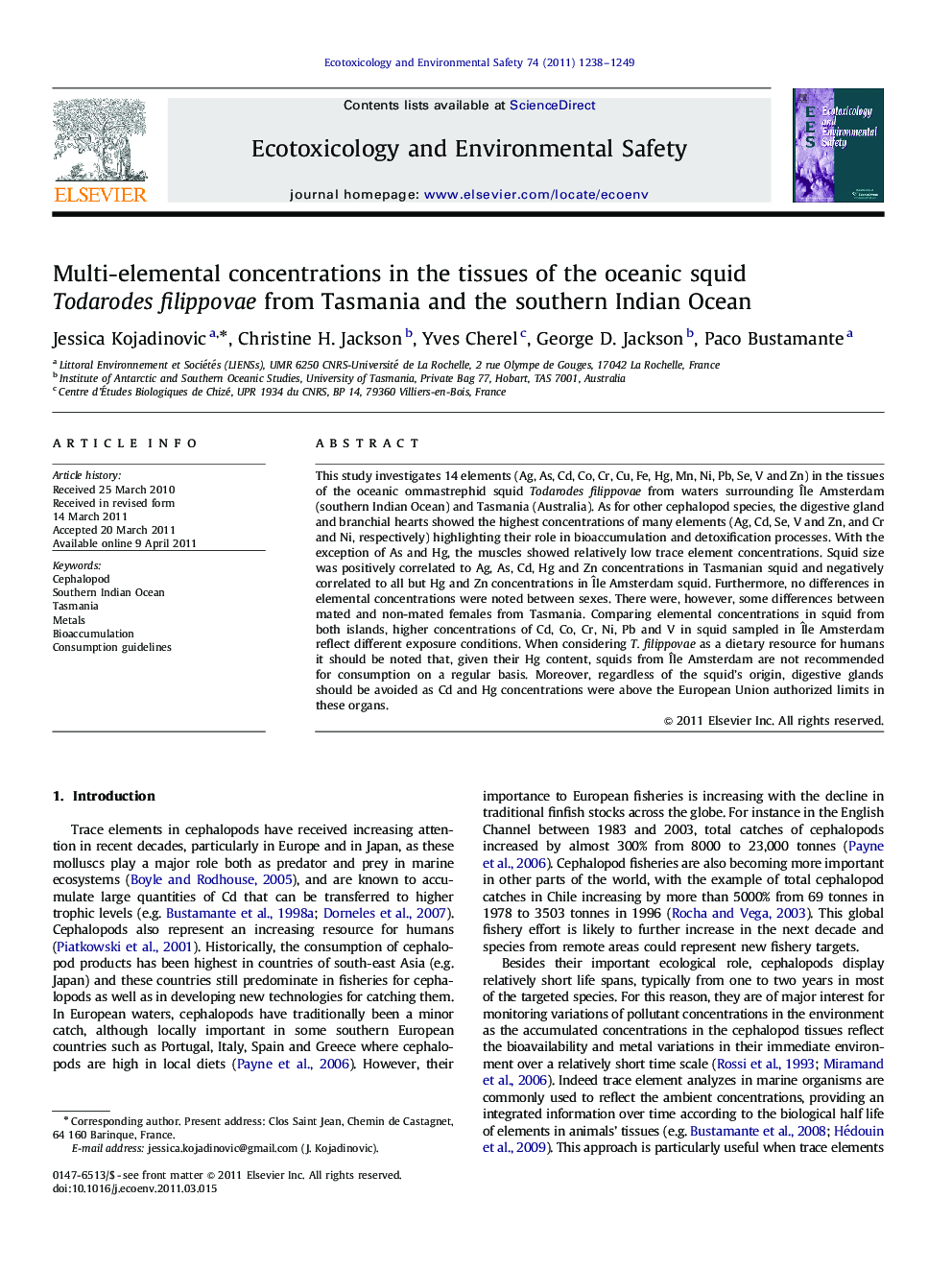| Article ID | Journal | Published Year | Pages | File Type |
|---|---|---|---|---|
| 4421201 | Ecotoxicology and Environmental Safety | 2011 | 12 Pages |
This study investigates 14 elements (Ag, As, Cd, Co, Cr, Cu, Fe, Hg, Mn, Ni, Pb, Se, V and Zn) in the tissues of the oceanic ommastrephid squid Todarodes filippovae from waters surrounding Île Amsterdam (southern Indian Ocean) and Tasmania (Australia). As for other cephalopod species, the digestive gland and branchial hearts showed the highest concentrations of many elements (Ag, Cd, Se, V and Zn, and Cr and Ni, respectively) highlighting their role in bioaccumulation and detoxification processes. With the exception of As and Hg, the muscles showed relatively low trace element concentrations. Squid size was positively correlated to Ag, As, Cd, Hg and Zn concentrations in Tasmanian squid and negatively correlated to all but Hg and Zn concentrations in Île Amsterdam squid. Furthermore, no differences in elemental concentrations were noted between sexes. There were, however, some differences between mated and non-mated females from Tasmania. Comparing elemental concentrations in squid from both islands, higher concentrations of Cd, Co, Cr, Ni, Pb and V in squid sampled in Île Amsterdam reflect different exposure conditions. When considering T. filippovae as a dietary resource for humans it should be noted that, given their Hg content, squids from Île Amsterdam are not recommended for consumption on a regular basis. Moreover, regardless of the squid's origin, digestive glands should be avoided as Cd and Hg concentrations were above the European Union authorized limits in these organs.
